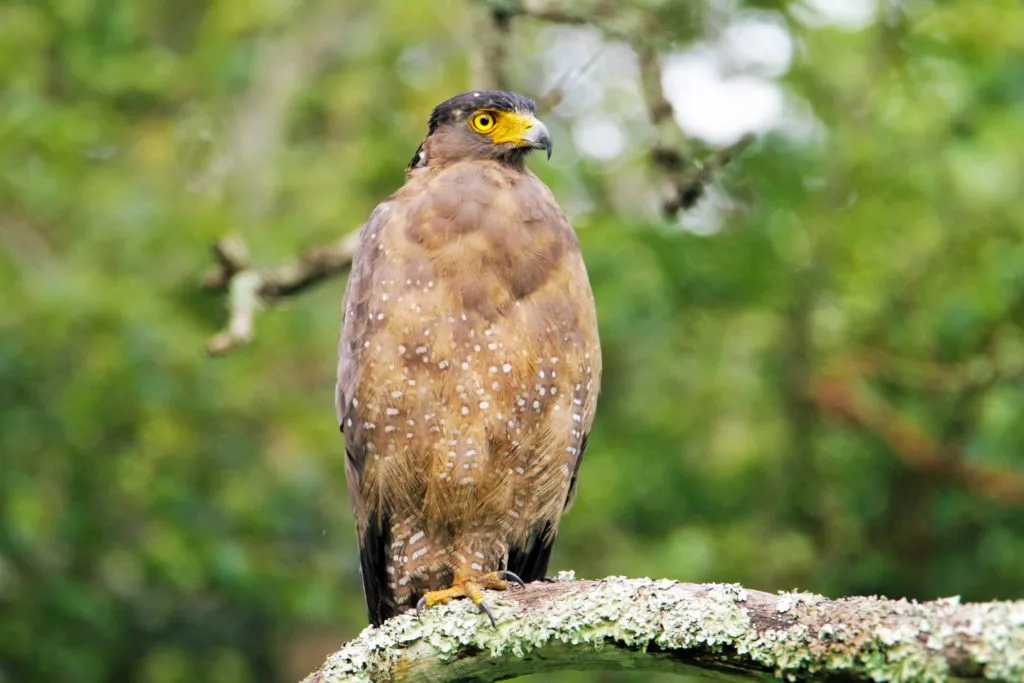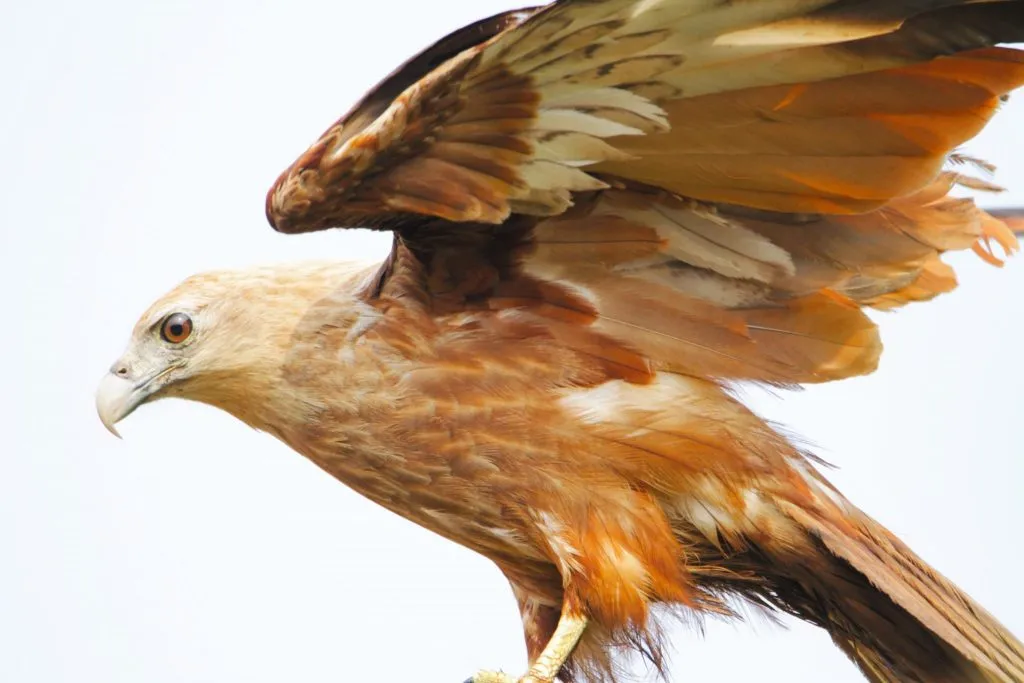by Dr. Anand Titus and Geeta N. Pereira
Indian coffee forests stretching forth thousands of miles are perfect bird sanctuaries because they provide a safe haven for all forms of life. These coffee forests radiate a wide variety of birds in different shapes, sizes, colors, habits and instincts. Each species is present in select numbers and occupy almost every conceivable niche.
Birds receive immeasurable assistance from the proactive caring of Indian coffee farmers. Due to the reverence, adulation and protection that coffee farmers have bestowed on the coffee forests, it has resulted in the survival of hundreds of native & endangered bird and animal species.
Birds of prey are also known as raptors a term that comes from the Latin word “rapere” which means to either seize, snatch or capture. Hundreds of birds fall into this category and many can fall into multiple categories.
Birds of prey are broadly defined as carnivorous birds, such as a hawk, eagle, or owl that hunts and kills other animals, especially vertebrates, for food. These birds are gifted with strong talons and a sharply hooked bill. These birds feed wholly or chiefly on meat taken by hunting or on carrion.

Special characteristics of birds of prey
Birds of prey are gifted with special characteristics that set them apart from other birds.
Excellent eyesight. The eye can turn from a telescopic vision to a binocular vision in seconds depending on the location of prey. An eagle has 8-10 times the number of sensory cells in its eyes as humans do.
Specialized feathers, wings, and tails.
Speed. Agility. Soaring or stealth.
Structure of legs, feet, and talons – based upon types of prey
Curved Claws, Strong feet
Structure of beaks – also based upon types of prey.
Hooked Beaks
Color – for display or camouflage
Hearing – most specialized in nocturnal hunters and harriers
Scientific Classification of Birds of Prey
There are 287 known species of birds of prey and experts classify them in different ways.
Order: Falconiformes – meaning: “Cycle-shaped- falcate” beaks and talons – these are all the falcons, hawks, eagles, kites, harriers, etc.
Order: Strigiformes – meaning: “formed or shaped like northern white-faced owl screech-owls”. This order includes all the species of owls.
The Falconiformes are primarily diurnal (active during daylight) the Strigiformes are primarily nocturnal (active at night).
These two orders of birds are not closely related but possess similar characteristics because of similarities in the way they hunt.
Kites
Kites are not as strong as eagles. They have a long wingspan but have weak wings. They often glide through the thermals and take live vertebrate prey, but mostly feed on insects or even carrion.
Brahminy Kite, Brown Kite, Pariah Kite, Black-winged Kite
Eagles
Eagles tend to be large birds with a long wingspan and broad wing. Their feet are big, mostly feathered to the toes, and build nests on tall trees with dry twigs and sticks.
Crested Serpent Eagle, Short-toed snake eagle
Ospreys
Ospreys are migratory in nature and specialize in catching small birds and fish. Ospreys build large stick nests.
Hawks
Hawks are medium-sized birds of prey. They are mostly solitary and are ambush predators preying on small birds. Hawks have a short hooked bill and strong claws. They usually have long tails for tight steering.
Eurasian sparrow hawk
Owls
Owls live close to human habitation and are specialized hunters of mice, rats, rabbits, and at times small birds. They are nocturnal and have keen eyesight. They can rotate their necks a maximum of 270 degrees without breaking blood vessels or tearing tendons. These birds have fixed eye sockets, which means their eyeballs can’t rotate, forcing them to stretch their necks. They fly almost silently due to their special feather structure that reduces turbulence. They have particularly acute hearing.
Vultures
Vultures are scavengers which means they eat animals that are already dead. Eg. Caracas of bovines and other domestic animals.
Buzzards
Buzzards are medium-sized birds of prey with robust bodies and broad wings.
Honey Buzzard
Harriers
Harriers are large slender hawk-like birds with long tails and thin legs.
Marsh Harrier
Falcons
Falcons are medium size birds of prey with long pointed wings, they are swift flyers.
Besra, Shikra, Common Kestrel, Peregrine Falcons
Case Study involving Peregrine Falcons
Peregrine Falcons do not eat fish but do eat birds that eat fish, so they also began to store DDE in their bodies. In birds, DDE interferes with calcium metabolism, so when they tried to reproduce by laying eggs, the eggshells, which are primarily made of calcium were so thin that they broke when the females set on the eggs to incubate them.
Birds of Prey Conservation
The Indian Wildlife act protects all forms of wildlife and the laws are enforced strictly.
Area of Concern
By the time Rachel Carson published Silent Spring in 1962 to draw attention to the damage to wildlife caused by pesticide use, it was obvious that populations of Bald Eagles, Peregrine Falcons, Osprey, Brown Pelicans, and many other species were decreasing The detrimental effects of ingested antibiotics, may decrease the health of certain species of birds of prey with lethal potential, especially in nestlings and fledglings. This is especially true in the case of migratory birds of prey. The intensive use of antibiotics worldwide and their presence in wild birds have global implications for conservation.

Conservation
Conservation on community level-villages
Conservation promotion through private landholders
Increasing Protected Area Network
Empowering tribal and creating forest-based livelihood options
Regeneration of forests-Sacred Forests
References
Anand T Pereira and Geeta N Pereira. 2009. Shade Grown Ecofriendly Indian Coffee. Volume-1.
Bopanna, P.T. 2011.The Romance of Indian Coffee. Prism Books ltd.